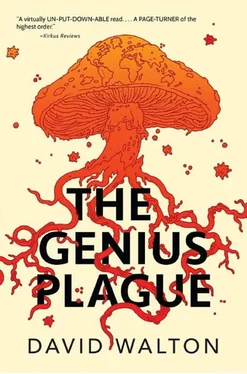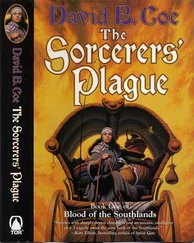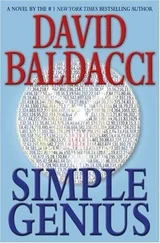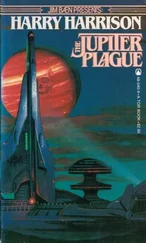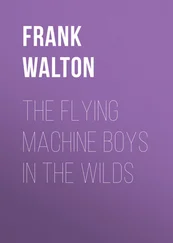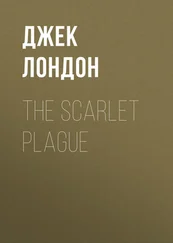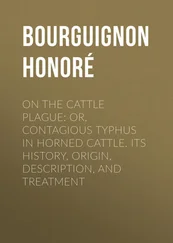I had no time to waste. Before long, someone else would come into the hangar and catch me lurking around. I walked across the hangar toward the plane.
“Neil!”
I spun, surprised to hear my name. I was even more surprised to see Shaunessy Brennan walking toward me.
“Neil, what are you doing?”
My mind raced, putting the pieces together. She had followed me. She must have seen me leave the Sandia lab and trailed me all the way here. She could report me, and my mission would fail. The spores would drop, and countless Ligados would become slaves to General Barron or whoever controlled the command signal.
I yanked the pistol out of my waistband and pointed it at her. Despite the fact that I hadn’t fired one in years, I felt confident that I could hit her. That I could put a bullet in any square inch of her I chose, in fact. I was acutely aware of every part of my body, the angle of my arm, the positions of my fingers, and I could mentally project the parabolic arc of the bullet from the weapon to its precise destination. I wouldn’t miss.
She took a step back, her eyes wide, and threw her hands in the air. “Neil? You don’t have to do this.”
My finger touched the trigger. I felt its cool, metal surface, the give of its underlying mechanism. I had to kill her. She would talk. She would ruin everything.
“I saw what you wrote on the plane,” she said. “I know you’re in there. Fight it, Neil. This isn’t you.”
I had no choice. If I let her live, there was no way I could hide on the plane and not be found. Whatever security hole had been created by other Ligados, allowing me this chance to slip aboard, would not be repeated.
But this was Shaunessy. The part of me that was still myself rebelled. My finger tried to squeeze the trigger, but I resisted, refusing to allow it to finish the job. The muscles of my hand strained, shaking, alternately squeezing and releasing the trigger by millimeters. Sweat broke out on my forehead.
I looked Shaunessy in the eye. “Help,” I said. “Please help me.”
Then I pulled the trigger. At the same moment, I desperately shifted my weight, trying to throw off my aim, but it wasn’t enough. She went down, a shocked expression on her face, her hands reaching for the hole the bullet had torn into her chest. I stood there, horrified. I had killed her.
For a moment, the hold the fungus had on my mind cleared, and I felt the full awfulness of what I had just done. I realized I had no hope of resisting it, not for long, not if it could make me do something like this. There was only one way out, if I had the quickness and courage to go through with it. I raised the gun to my head.
I reached for the trigger, but before I could pull it I felt a sudden pain in the middle of my back. My body stiffened, all my muscles going totally rigid as an arc of pain shot through my body, and I collapsed to the floor. The gun dropped from my suddenly nerveless fingers. A member of Kirtland’s security police force stood over me, Taser in hand, surrounded by three of his squadmates. These weren’t civilian police or rent-a-cop security guards. They were soldiers, with hard expressions, black riot gear, and assault rifles as long as my arm. I wished they’d shot me. I wondered why they hadn’t.
They hauled me to my feet. I could barely stand, but I didn’t need to, since they held me up. I could now see Shaunessy’s prone and motionless form, surrounded by more soldiers and a medic. I didn’t understand. How had so many people gotten here so fast?
Melody Muniz strode around them and into view, her expression full of dismay, fury, and horror. “How did he get a gun?” she demanded. “He wasn’t supposed to have a gun.”
Then it all made sense. I had never been alone in the hangar. Shaunessy had seen what I had written on the plane and told Melody about it. Melody and others had kept track of me, probably listened in to my phone conversation with my brother, and then followed me here. The soldiers had probably been ordered to take me non-lethally, so I could tell them what I knew.
“Is she dead?” I asked.
Melody impaled me with her eyes. “Shaunessy begged to talk to you before we took you down. She wanted to reason with you, to give you a chance to change.”
I hated the way she was looking at me. I wanted to tell her I had tried to resist, but it just seemed like a weak excuse. The truth was, I hadn’t resisted. I had given in to the fungus, and Shaunessy had paid the cost. I didn’t deserve anyone’s pity.
“Please,” I said. “Is she dead?”
Melody paused and looked back. At that moment, Shaunessy sat up and looked around. Half of her blouse was wet with blood, but it had been cut away to reveal the bullet-proof vest she wore underneath. Her upper arm was neatly wrapped in a bandage that already showed a spot of red through the fabric. The shot, thrown off by my resistance, had missed the vest and clipped her in the arm.
“She’ll be all right,” Melody said. She turned back. “I don’t know about you.”
They locked me in the base’s correctional facility, usually reserved for military personnel. They took everything in my pockets, including the iPhone, and put me in a tiny room with a plastic bed, a foam mattress, a toilet, and nothing else. I could hear other inmates drilling and responding to shouted commands like it was boot camp, but I was in isolation, and they left me alone.
I had a lot of time to think.
I had hurt someone I cared about. I knew now that Shaunessy would live, but when I’d shot her, I had no way of knowing she was wearing a vest. I had actually tried to kill her. I looked at my hands as if they belonged to someone else. I had betrayed my coworkers, betrayed my country, betrayed the NSA. Worse, I barely cared. I felt more emotion over failing at my mission than I did over betraying my friends.
Of course, I had also been betrayed. First by Paul, then by both of my parents. Instead of unifying us, the fungus was dividing us. We couldn’t trust anybody. Not even ourselves.
I didn’t really blame my mom or dad or Paul for what they’d done to me. They were under the compulsion of the fungus. It wasn’t their choice. On the other hand, I felt entirely responsible for shooting Shaunessy. I remembered doing it. I had stood there, gun in hand, and I had pulled the trigger. I had resisted for a time, so clearly I had the power to fight it. But I wasn’t strong enough. I had given in, and it was Shaunessy who had suffered for my weakness.
I sat on the concrete floor, my back against the wall, and buried my head in my hands. I couldn’t trust my own mind. Which emotions were mine, and which were from the fungus? Even when I could tell, that knowledge didn’t help me change them. I couldn’t even feel horrified about the thought of a fungus living in my brain. I knew , inside, that it was horrible, and that formerly I would have found it horrible, but when I thought about it, all I felt was a flood of warm and satisfied feelings.
Thinking about McCarrick’s version of the fungus, however, prompted no such positive reaction. It was a competing species to the fungus inhabiting me, trying to coopt the same available resources. In this, the two parts of my mind agreed. I could actually think clearly about it, without unwanted emotions clouding my perceptions.
But how did it know? How could a fungus think through an issue and come to a conclusion? The answer, once I considered it, was obvious: it couldn’t. The fungus itself didn’t think at all. It improved my brain’s efficiency and affected its workings, but ultimately it was the same as the mycelium in the NSA basement, wrapped around the fiber-optic cable—a complex data filter, able to evaluate feedback and respond. It was me doing the thinking. The fungus was just integrating with my brain like it would integrate with and make use of anything else.
Читать дальше
